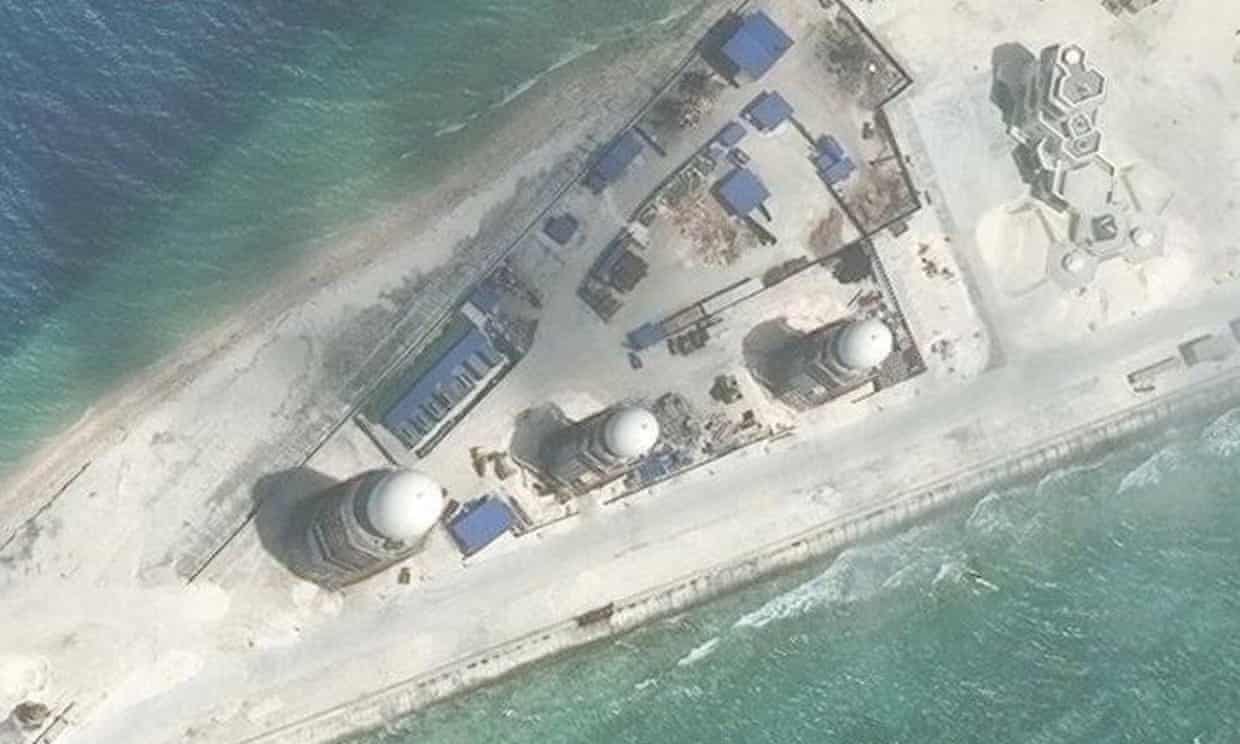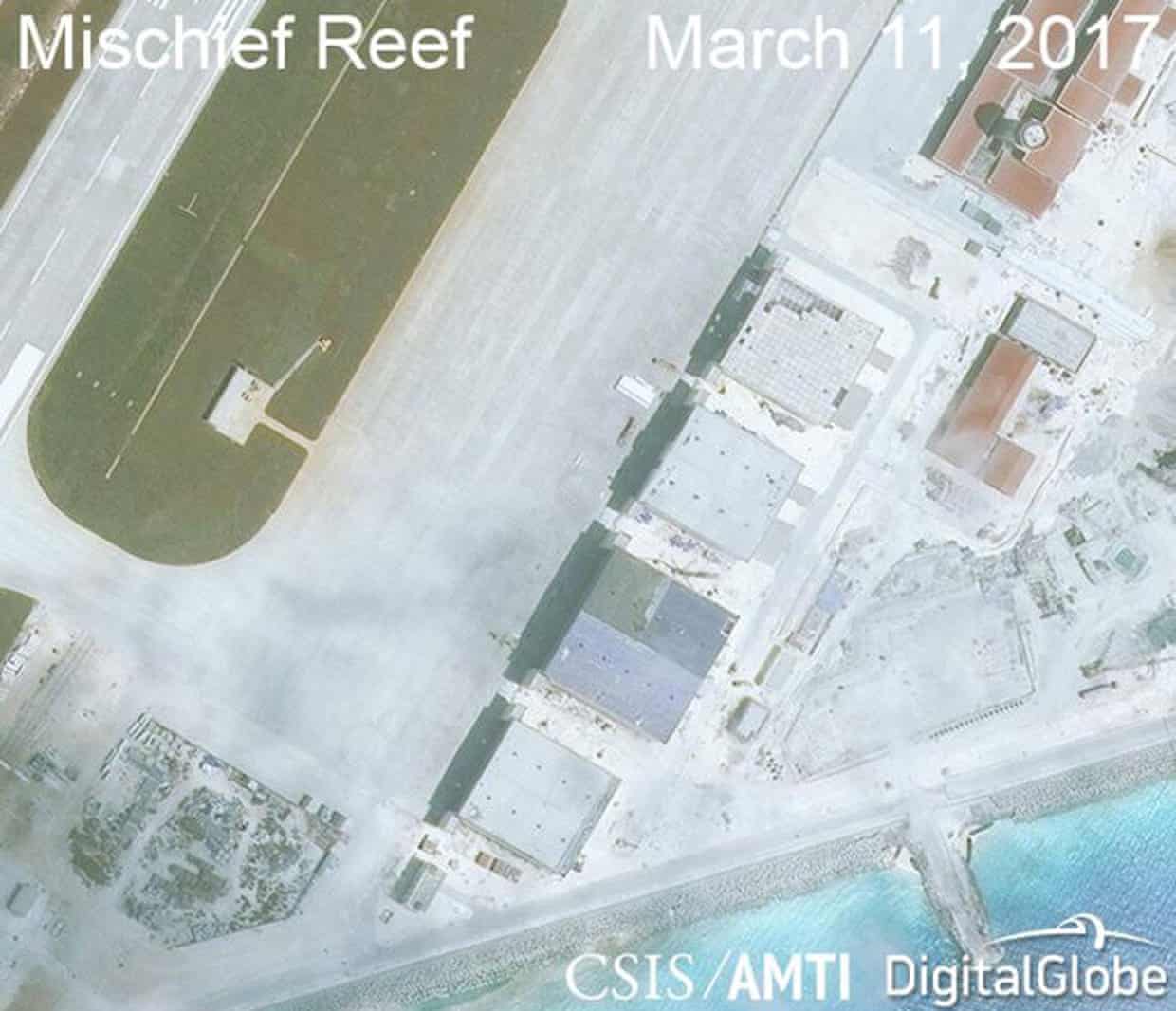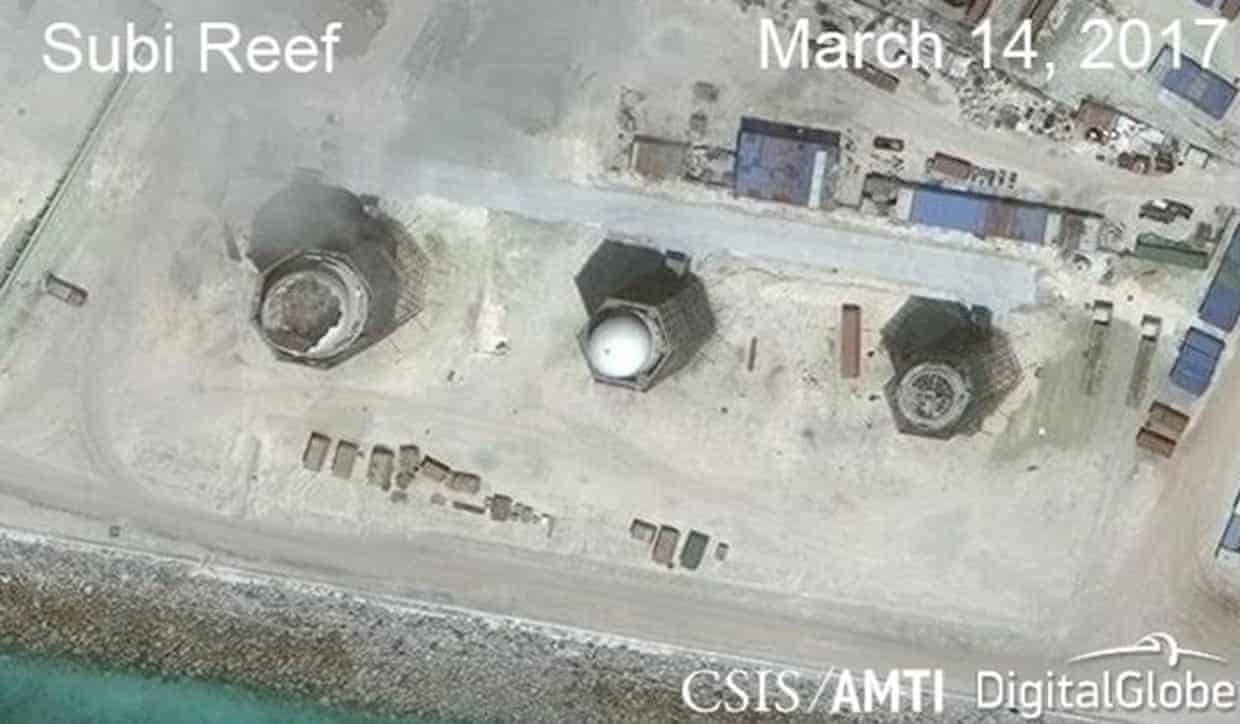China has largely completed three major military bases in the South China Seathat have naval, air, radar and missile-defence facilities, according to a US thinktank.
“Beijing can now deploy military assets, including combat aircraft and mobile missile launchers, to the Spratly Islands at any time,” said the Asia Maritime Transparency Initiative (AMTI), part of Washington’s Center for Strategic and International Studies.
The thinktank published images taken this month of what it calls the “big three” island air bases – Subi, Mischief, and Fiery Cross reefs – which it has analysed via commercial high-resolution satellite imagery for two years.
“China’s three air bases in the Spratlys and another on Woody Island in the Paracels will allow Chinese military aircraft to operate over nearly the entire South China Sea,” AMTI said. “The same is true of China’s radar coverage.”
China denies it is militarising the South China Sea, which is thought to have significant oil and gas reserves and is a route for half of the world’s commercial shipping. The reclamation of the islands has also had a devastating impact on some of the world’s most biodiverse coral reefs.
Beijing asserts sovereignty over maritime areas that span 3.5m sq km but are also claimed by Vietnam, Taiwan, Malaysia, Brunei, the Philippines and Japan. China’s military build-up has become one of the US president Donald Trump’s most explosive foreign policy challenges.
Under Barack Obama’s administration, Washington claimed it was neutral on the question of sovereignty over the South China Sea islets, reefs and shoals, but also conducted regular air and naval patrols to assert its rights of passage.
But the US secretary of state, Rex Tillerson, said in January that the US should go further by blocking Chinese access to the islands. Last week the Chinese premier, Li Keqiang, said defence equipment had been placed on islands to maintain “freedom of navigation”.
Chinese warships frequently radio US aircraft in the region, warning them not to approach. And last month a Chinese military aircraft had an “unsafe” encounter with a US navy surveillance aircraft over the area, the US Pacific command announced.
AMTI said China had installed HQ-9 surface-to-air missiles at one island as well as anti-ship cruise missiles. It had also built enough hangars for 72 combat aircraft and several larger bombers.
The group’s director, Greg Poling, said the images showed new radar antennas on Fiery Cross and Subi: “So look for deployments in the near future.”
Reuters contributed to this report



No comments:
Post a Comment